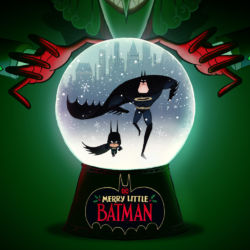It’s been almost a decade since James Cameron revolutionized cinema with Avatar, demonstrating CG characters could lead a live-action feature film. Now, with Robert Rodriguez in the director’s seat, he seeks to top that achievement with a CG human character. But does this gamble pay off? Beware minor spoilers.
Sadly, this is a failed experiment. Once you watch Alita: Battle Angel on the big screen, it becomes impossible to overlook how offputting Alita’s huge eyes are, and your own eyes spend the whole time darting around for someone else to latch onto, only there isn’t anyone with enough depth at all. With their decision to make Alita a photoreal anime character, Cameron and Rodriguez have made the fatal error of graffitiing over their charismatic lead’s performance – I would’ve honestly paid more money just to see Rosa Salazar’s unedited performance, even if it meant Alita only wore a performance capture suit.
Compounding the issue is that Alita stands like out like a sore thumb among all the other characters: she is surrounded by kooky and bizarre cyborgs, who seem to have replaced everything but their faces with robotics, but at least those faces are still human. (Even Jackie Earle Haley’s giant henchman still looks vaguely recognizable, unlike Alita’s overtly stylized face.) Imagine if Steven Spielberg had made The Adventures of Tintin as a live-action film with a CG main character – the effect reaches Roger Rabbit levels of mishmash, only it’s inappropriate as this isn’t meant to be as cartoonish as that film.
Structurally, the film suffers from the major issue of Alita not knowing what she actually wants: rather, she’s driven by figuring out her past and her motivations. The film is essentially the first half of a superhero origin film dragged over two hours, mistaking neverending worldbuilding for character development, and as a result (because we don’t really know anything), every big dramatic twist falls flat and comes across as more exposition. The episodic narrative propels us from one big setpiece to the next, and we feel like we’re following a group of undeveloped protagonists watch Alita slowly come into her own. Unfortunately, by the time Alita realizes what she wants and becomes the true protagonist, the movie is almost over.
That might not have been a problem if there was time to overcome the elephant in the room. Films like these – from Avatar to Bumblebee – typically wait for the digital main characters to grow in prominence, but with Alita, viewers are thrown into the uncanny valley with her almost right off the bat, and there is no time to get used to Alita’s eyes. The filmmakers placed the utmost confidence in Weta Digital to help audiences accept her as their surrogate into this strange new world, but uncanny skin and hair textures alone cannot sell the notion she is alive. (You have to wonder to they were only unable to backtrack because the amount of money and resources already spent on the project.)
With Salazar’s performance neutered by the unnerving puppet painted over her, love interest Keean Johnson’s Hugo emerges instead as the most compelling and complex character. However, his arc becomes rushed as the film hurries to set up a sequel. And no matter what, he is still unable to convince us someone would fall in love with Alita, as brave and strong as she is, rendering a pivotal scene in the middle of the film laughable. Mahershala Ali is as charismatic as ever as the villain, but his dull motives render the final confrontation emotionally unsatisfying. Jennifer Connelly is saddled with looking mysterious to set up the sequel, while Christoph Waltz is great with an uncharacteristically subdued performance as Alita’s adoptive father, but he also recedes from view because of the spluttering final act.
Rodriguez’s direction of the action is solid, balancing his kinetic style with the more subdued and down-to-earth approach of shooting fight scenes that a Cameron film would have. The motorball sequences are particularly great, and Alita really comes into her own during the later, CG heavy professional races – Battle Angel is perhaps a great animated sports movie trapped inside a dull live-action superhero film. And because the combat is typically between cyborgs, Rodriguez has a lot of fun pushing how gratuitous a PG-13 film can be (though not to the level of the manga, naturally). The lighting and production design are fine, if too reminiscent of the likes of Blade Runner, Elysium and The Maze Runner – at the very least, the decision to locate Iron City in South America makes for some refreshing locales.
Ultimately, Alita: Battle Angel is an unengaging film that spends too much time setting up its world and a sequel instead of telling a compelling story. Yukito Kishiro’s manga was positively crude in its plotting and dialogue next to this version, but at least it managed to be emotional, exciting and empowering – I, personally, plan on finding a copy of the anime to watch its interpretation. Despite Dua Lipa’s rousing end credits song defiantly claiming “this is not a swan song,” audiences will find little here to entice them into continuing this take on Alita’s story.






